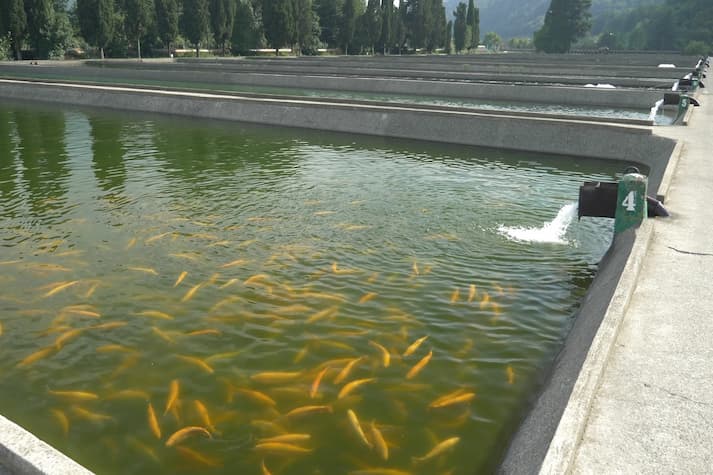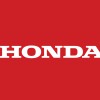Filter
7 Ways to Cultivate Good Fish
Article
7 Ways to Cultivate Good Fish
05 February 2023

Interested in the fish farming business? you, you have to get to know good fish farming methods first. In recent years, many people have said that catfish farming is easier than other jobs. However, is it really that easy? The answer is no.
In fact, to produce quality and marketable fish, you need to pay attention to good and correct fish farming methods. After all, fish are living things that need to be cared for and managed properly in order to provide quality crops.
Moreover, a data states that most Indonesian people like to consume fish. Don't worry and don't worry, you can start learning good fish farming through the article below.
Good Fish Cultivation Methods
Doing fish farming does not only open land and then sow seeds and harvest, but there are many steps that must be carried out in order to produce quality seeds.
Not only the type of fish, you must also think about the type of feed used, the water temperature, to the life of the ecosystem around the pond. Honda Power has summarized the following ways of good fish farming as a whole:
1. Preparing the Land
The first stage in realizing good fish farming methods is preparing the right land. Land is the main and important component in the fish farming process, so even in choosing it, you need to consider various aspects so that the fish can develop properly.
Some aspects that need to be considered in choosing land include the depth of the pond and exposure to sunlight. Both must be ensured in the appropriate portion or size so that aquaculture activities can run optimally including the growth of the fish.
you can choose what type of pond they want, such as concrete ponds, earthen ponds, tarpaulin ponds, or aquariums as a means of breeding fish seeds. This type of pool can be adjusted according to the budget that has been prepared beforehand.
Read Also: The Honda Water Pump Capacity Table
2. Preparing Fish Seeds
Next, you need to prepare quality fish seeds according to your ability to care for them. The reason is, some types of fish require special care in order to develop and grow better.
Superior quality fish seeds will usually produce fish that are healthier and don't get sick easily. This will certainly benefit you because it speeds up harvest time by up to 30 percent.
3. Spread the Seeds According to the Pool Area
After the pond is ready and quality seeds have been selected, it's time for you to sow the seeds in an amount that is appropriate to the size of the pond and considering its density. But before that, first place the fish seeds in water with the same temperature conditions as pond water.
This is done as a process of adaptation of fish before entering the pond. Because each pond has different oxygen levels, fish also need time to adapt to the new environment. This method can make growth better because it reduces the level of stress risk in fish.
4. Provide Fish Feed and Vitamins
An equally important part of creating quality fish yields apart from the seeds is the feed and vitamins used. Currently, you may be able to find various types and brands of feed and vitamins easily and with many choices, but not all of them are of good quality and contain good ingredients.
Therefore, choosing the right fish feed and vitamins with complete nutritional content is an important thing that cannot be missed. In addition, don't forget to provide the appropriate dose of feed and vitamins. Giving too much or less feed can actually cause fish poisoning. Normally, fish need feed 2 times in the morning and evening.
5. Ensure Temperature
Water temperature can indirectly affect fish growth. Therefore, you need to set the right water temperature around 25 to 30 degrees Celsius. As previously stated, fish farming does not only focus on fish, feed and vitamins.
However, it is necessary to manage pool water properly so that it stays at a normal temperature and is always clean. Avoid leaving the water unwashed or not replaced from the start because this can affect the process of fish growth and quality later when it is harvested.
6. Maintain Conditions and Pond Ecosystems
In practice, there are the biggest factors that can thwart the process of fish farming, namely pests which are a source of disease for fish. Not only sick, even fish can be at risk of dying together if the pests continue to spread and are not treated immediately.
That's why changing pond water and draining it regularly is an important part of this cultivation process. The time for changing water depends on the type of fish being cultivated because not all fish need new water every time.
For example this fish which require water changes every two weeks, while catfish require water changes when the fish no longer have an appetite and come to the surface more often.
7. Harvest Process
If all of the above processes have been implemented correctly, then the final step of good fish farming is the process of harvesting fish. Of course to do so, there are two things that must be considered and cannot be done casually. First, make sure the fish harvest requirements, namely age and weight, meet harvest standards.
Second, adjust the amount harvested with market needs. However, avoid forcing the harvest process when the fish is not ready just because you are tempted by market demand. Because fish that are not ready for harvest have conditions that are not optimal in terms of size and weight that are still too small.
Self Check Good Fish Cultivation Methods (CBIB)
Good fish farming methods or CBIB cannot be done carelessly. There are several inspection criteria so that cultivation can be said to be feasible. Some self-check ways of good fish farming include:
- The location must be in the area spatial planning zone, not contaminated with hazardous substances that impact food safety.
- Availability of quality water sources and avoid pollution. In order to meet these criteria, use a Honda Power water pump to distribute clean water directly from a spring.
- Design and layout supports the production process and is able to maintain optimal environmental conditions.
- Aquaculture equipment is made from materials that are environmentally friendly, harmless, and do not cause physical damage to fish.
- Preparation of the container which includes a pool of still water, the container has gone through the process of cleaning to filtering the water, using lime to chemicals according to the correct dosage.
- Seeds come from CPIB-certified hatcheries or if you get natural seeds, the catch is carried out in a way that maintains the sustainability of fish resources.
- Selection of species and stocking density with the principle of not having a susceptibility to carrying disease in other fish and adaptation must be made before the seeds are spread.
- The feed used must be of good quality and given according to the type and size of the fish at the right dose.
- Health management must be carried out routinely by visual or laboratory means if necessary. Sick fish must be placed in a special container, if it cannot be cured then it must be destroyed by burying it.
- Water management is intended to maintain water quality so that it meets the requirements that the water quality is in accordance with the type of fish being kept. Efficient water replacement needs to be done, namely not too often to preserve the environment but not too infrequently either. The water replacement process can be done by Honda Friends easily using Honda Power water pump products which are designed with exclusive and sophisticated technology.
- Facilities and locations must be kept clean and protected from contamination, especially from human and animal waste and feces. All equipment used must be cleaned with a disinfectant to prevent the spread of disease.
- Harvest and post-harvest are handled quickly to prevent damage and minimize contamination. During the harvesting of fish, the water used must be clean and delivery must include ice.
- Handling of liquid, solid and other hazardous wastes must be carried out in order to reduce environmental impacts and product contamination as needed.
- Cultivation units carry out environmental management in accordance with applicable regulations.
- Workers who handle harvested products must be in good health and free from any conditions of infectious diseases, injuries, infections or diseases that can contaminate fish.
- Workers should be given training and outreach regarding good hygiene and all aspects of fish health and welfare management.
- Farmers document the activities or stages of pre-production, production, harvest and post-harvest.
Read also: How to Identify a Genuine Honda Water Pump?
After getting to know the good fish farming method above, are you interested in trying it? For those who have started before, have you implemented the right method?
Even though it sounds trivial, in fact, cultivating fish cannot be careless just by preparing a pond and sowing seeds. There are many things that must be considered and considered in order to achieve maximum fish yields and sell them more.
Not only quality seeds, you also need quality equipment to last longer and make your work easier when you need to drain the fish pond and change the water. Honda Power has a wide selection of water pumps that are designed with quality components and materials.
Like the Honda Power WL30XN NF water pump which is equipped with a 4 stroke GP-160 engine, of course it will make the process of sucking up pool water faster and the draining process is also much faster to complete.
All products created by Honda Power are SNI licensed and have a more efficient fuel consumption with a large water flow.
Intrigued by every detailed information on various other water pump products? Just visit the website and find the best and most trusted water pump according to your needs only at Honda Power Product.

Honda Power Products Indonesia
Honda Power Products menyediakan mesin serbaguna, generator, pemotong rumput, pemotong sikat, pompa air, dan mesin tempel.
